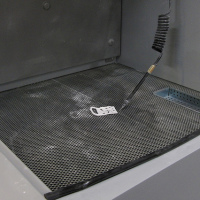The age of computers has given us much more than merely operating systems and the internet. Printing has also undergone a revolution since the days of the printing press and the typewriter. Before computers, all design work, architectural and engineering plans were drawn by hand, but today it is possible to create a printed 3D model of any type of plan and drawing.

From Page to Stage
3D printing is about the printing of parts of an item that are then assembled to reveal a 3D item or model of your design. It is important to remember that 3D printing is very different to 3D rendering and design on a computer. This is the next evolution in the world of design, print and reproduction of models and designs for both engineering and manufacturing.
Full Colour In Your Hands – Art of Stereolithography
There are many different types of 3D printing and technology, speed and reliability are increasing every moment. The basic process of 3D printing from a CAD or AutoCAD drawing to a 3D model uses a printing technology known as Fused Deposition Modelling.
- The first step is in the calibration of the axes along which the computer will guide the printer nozzles. X, Y and Z-axes are all set up to make sure that you get a 3D version of your 2D drawing.
- A string of plastic is fed from a print cartridge into a reservoir where it is melted down to form an ink like substance. This “printer’s ink” is forced through plungers that are the size of fine needles. There are two plungers for each 3D printed model that is to be formed.
- The first needle will ‘print’ a support material. Support material can be composed of wax or plastic, which is used to support various parts of the model while it is being printed.
- The most important part of the printing process is the layering. Each layer of the drawing is forced through a nozzle over or around the support material to build up a 3D representation of the drawing.
Many 3D printing processes are guided by CAD drawing programs to ensure that every detail of the drawing is correct and that even miniscule variations can be included in the final product.
The value of using support material has meant that even models with moving parts are able to be printed easily and relatively quickly. As soon as a part of the model is finished, the support material is broken away to reveal your finished printed 3D drawing.
Each model will go through a number of processes as part of the 3D printing format. You can use colour to define different parts and you are able to create a number of smaller parts to make a larger item or model for display purposes.
3D printing may be beyond the reach of your typical home office, but as technology gets faster and the process parts get smaller and easier to produce, it will not be long before you can print out your birthday card in the form of a small 3D model. You may even be able to print small toys and craft items right from your home PC.
Image credit: Creative Tools
